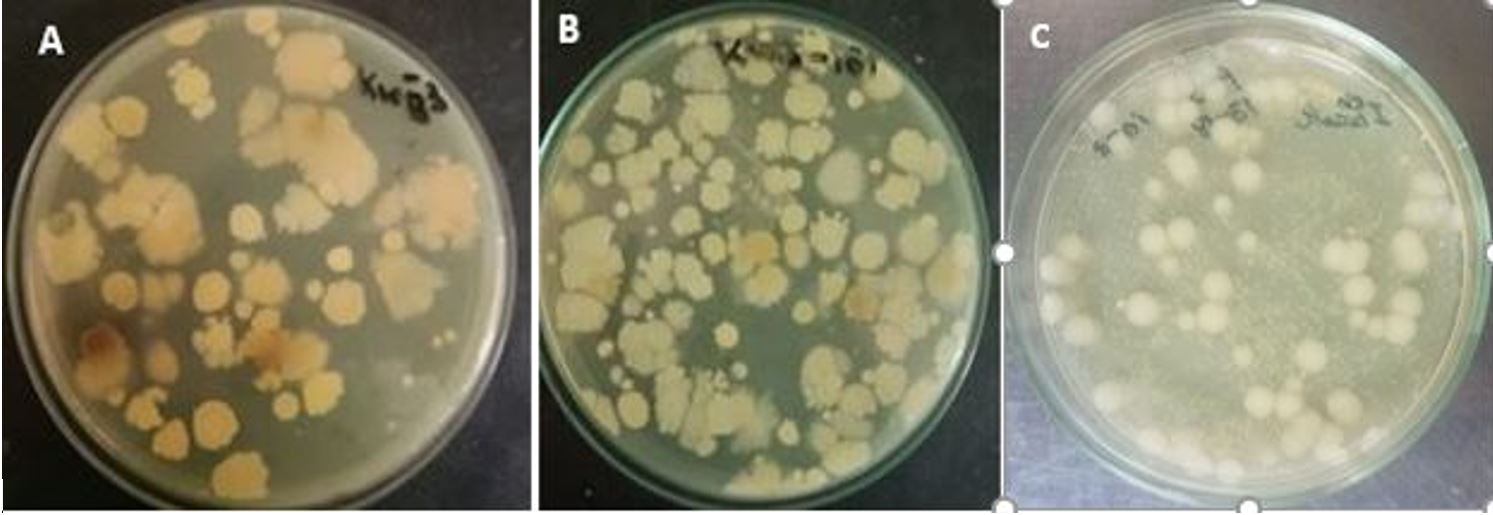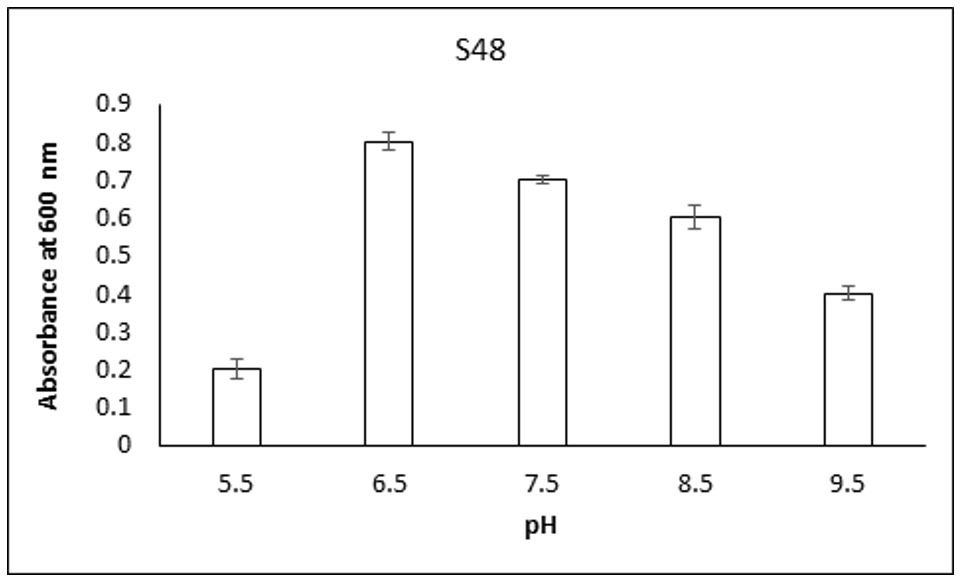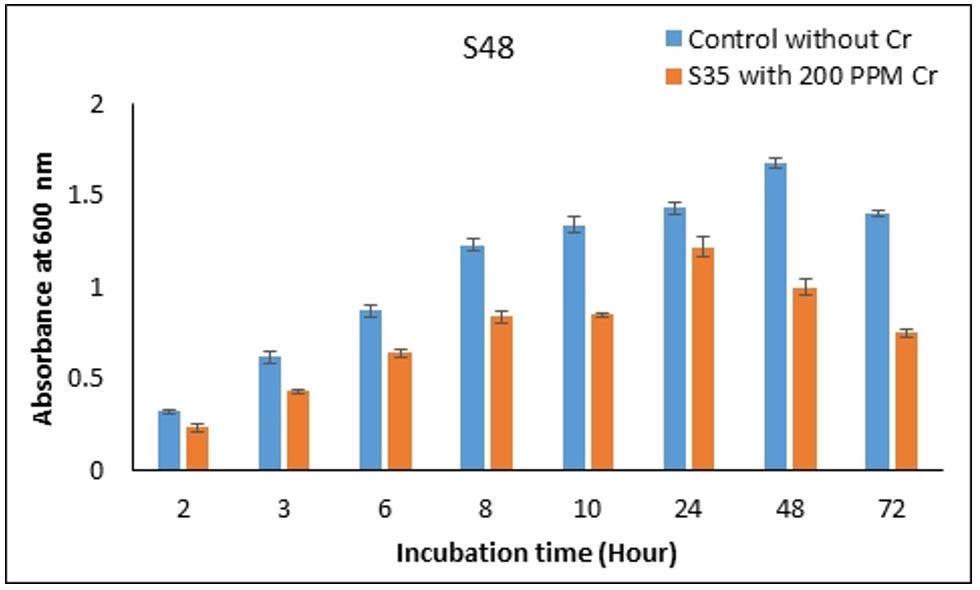Abstract
Chromium (VI) a highly toxic metal, a major constituent of industrial waste. It is continuously release in soil and water, causes environmental and health related issues, which is increasing public concern in developing countries like Pakistan. The basic aim of this study was isolation and screening of chromium resistant bacteria from industrial waste collected from Korangi and Lyari, Karachi (24˚52ʹ46.0ʺN 66˚59ʹ25.7ʺE and 24˚48ʹ37.5ʺN 67˚06ʹ52.6ʺE). Among total of 53 isolated strains, seven bacterial strains were selected through selective enrichment and identified on the basis of morphological and biochemical characteristics. These strains were designated as S11, S13, S17, S18, S30, S35 and S48, resistance was determined against varying concentrations of chromium (100-1500 mg/l). Two bacterial strains S35 and S48 showed maximum resistance to chromium (1600 mg/l). Bacterial strains S35 and S48 were identified through 16S rRNA sequence and showed 99% similarity to Bacillus paranthracis and Bacillus paramycoides. Furthermore, growth condition including temperature and pH were optimized for both bacterial strains, showed maximum growth at temperature 30ºC and at optimum pH 7.5 and 6.5 respectively. It is concluded that indigenous bacterial strains isolated from metal contaminated industrial effluent use their innate ability to transform toxic heavy metals to less or nontoxic form and can offer an effective tool for monitoring heavy metal contamination in the environment.
Keywords:
chromium resistance; industrial waste; Bacillus paramycoides, Bacillus paranthracis

 Thumbnail
Thumbnail
 Thumbnail
Thumbnail
 Thumbnail
Thumbnail
 Thumbnail
Thumbnail
 Thumbnail
Thumbnail
 Thumbnail
Thumbnail
 Thumbnail
Thumbnail
 Thumbnail
Thumbnail







